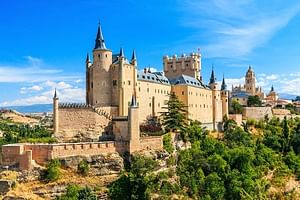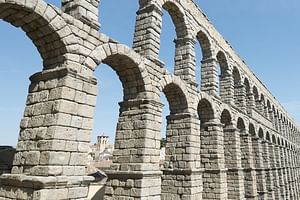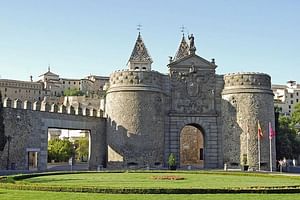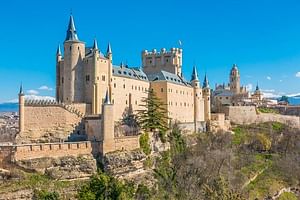Calle del Codo leaves the Plaza de la Villa and leads to the
Calle del Codo leaves the Plaza de la Villa and leads to the Plaza del Conde Miranda.
On the right-hand corner of the street, next to Plaza de la Villa, is the only door of the Torre de los Lujanes, with Gothic ornamentation, pointed horseshoe arch and lapidary inscriptions on the voussoirs, which used to communicate with the outskirts of the city.
Plaza de la Villa
Plaza de la Villa is one of the best-preserved monumental complexes in Madrid. It...
Plaza de la Villa is one of the best-preserved monumental complexes in Madrid. It is located in the historic centre, near the Puerta del Sol, and has been the seat of the capital’s City Council.
It was one of the main centres of medieval Madrid, as it is the origin of three small streets that correspond to the primitive layout of the city: El Codo, Cordón and Madrid. It is surrounded by the main façades of three buildings of great historical and artistic value, built in different centuries. The oldest is the Casa y Torre de los Lujanes (15th century), built in Gothic-Mudejar style, located on the eastern side of the square and today the seat of the Academy of Moral and Political Sciences. It is followed by the Casa de Cisneros (16th century), a Plateresque palace that closes the southern part of the square, and the Casa de la Villa (17th century), in Baroque style, one of the headquarters of the Madrid City Council, located on the western side of the square.
Royal Palace Madrid
The Royal Palace awaits us on our visit, ready to learn about its history?
The Royal Palace of Madrid...
The Royal Palace of Madrid is the official residence of the King of Spain; However, the current kings do not live in it, but in the Zarzuela Palace, so it is used for state ceremonies and solemn acts. Now is when our visit really begins.
Although Juvarra's original project was never carried out, the Royal Palace of Madrid can boast of being the largest inhabited palace in Europe. And we say inhabited because, although the Spanish Royal Family does not reside in it, it is still the place where they have their official residence. As we have commented previously, the building, whose works lasted until 1764 when Carlos III lived in it for the first time, is made up of 135,000 square meters and 3,418 rooms, also highlighting its 870 windows, 240 balconies or the 44 stairs it has. The comparisons are odious but, despite what many believe, the Palace of Versailles, near Paris, has 67,000 square meters, so that of Madrid surpasses it.
In the tourist visit, the almost 3,500 rooms are not covered, but some of the most outstanding rooms, around twenty, are. During the walk inside the Royal Palace, visitors take a true trip back in time, to the golden age of the Spanish Court in the 18th and 19th centuries. One of the most impressive moments is the encounter with the Throne Room, the true symbol of the power of the Crown. The two thrones defended by the golden lions, which were saved from the destruction of the Real Alcázar, the rich tapestries, curtains and carpets, the luxurious mirrors or the lamps
Almudena Cathedral
Next to the Royal Palace is the Almudena Cathedral, built on the...
Next to the Royal Palace is the Almudena Cathedral, built on the site of the former church of Santa María de la Almudena, which was built on a mosque and dedicated to the Virgen de la Almudena, patron saint of Madrid. The name of the Virgin and the cathedral come from the Arabic word al-mudayna, which means ‘citadel’. The cathedral is located in the historic centre of Madrid; the main façade is in front of the Royal Palace, while the transept façade faces Calle de Bailén and access to the crypt is via Cuesta de la Vega, at the end of Calle Mayor. Unlike most Christian temples, which are oriented east-west, the Cathedral is oriented north-south, the result of its design as an integral part of the Royal Palace complex.














